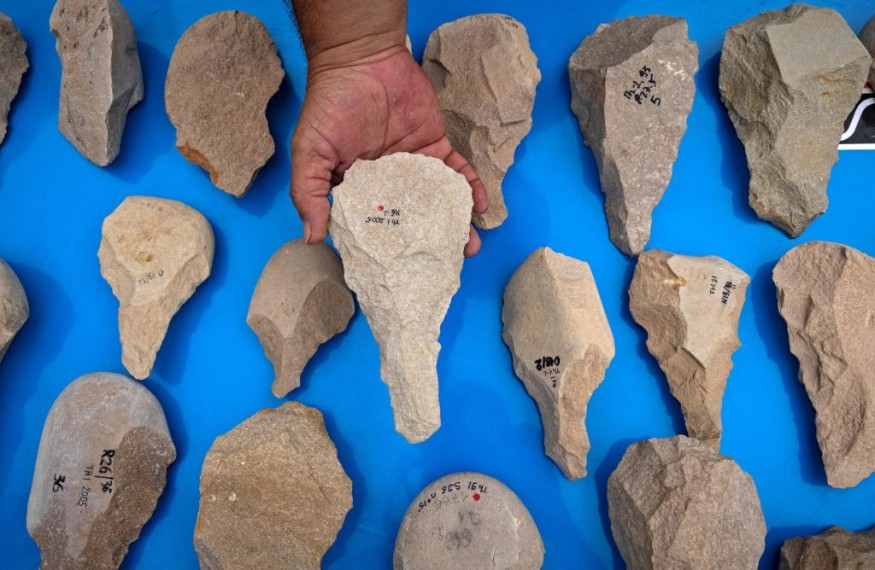A new study recently suggested that recycling ancient people of stone tools is about them being "memory objects" representing an association to the past and previous generations to remember people, places, and occurrences.
According to a ScienceAlert report, prehistoric places are filled with stone tools that seem to have "two life cycles." Specifically, they have been crafted, used, and discarded before being picked up a second time and then used again. The new research presents an interesting hypothesis for a reason for such practice.
The Touching Reason Prehistoric People May Have Collected And Reused Old Tools https://t.co/EbyNLU2LZj
— ScienceAlert (@ScienceAlert) March 13, 2022
Archeologists examined 49 flint tools excavated from a popular Revadim location in the south of Israel's Coastal Plain. The analyzed tools came from a sediment layer dated approximately 500,000 years ago.
Through an investigation of the patina of the objects, the chemical coating that's settling on flint when it is exposed to the open air for a prolonged period, the study investigators determined the role of these objects across two different life cycles of function.

Ancient People Collecting, Recycling Tools
Archeologist Bar Efrati from Tel Aviv University in Israel asked, why the prehistoric humans collected and recycled actual tools produced initially, utilized, and discarded by their ancestors, hundreds of thousands of years earlier.
He explained that the shortage of raw materials was "clearly not the reason at Revadim," a place where good-quality flint is accessible. Nor was the motivation function, since the recycled tools were neither unique in form nor extraordinarily fit for any specific purpose.
With microscopic analysis, the tools comprised two active edges, an old and a new one, a similar Florida Digital News report said. It appears that the second time these stone objects were used, it was for less demanding use, specifically for scraping soft materials such as leather and animal flesh instead of chopping or cutting.
What's more, the reshaping that occurred in these ancient tools that were picked up and used for a second time appears to have been very minimal.
Tools Holding Sentimental Values and Memories
The scars from the tools' first deployment were mostly retained, suggesting that it was essential to preserve their appearance. Based on these hints, the study investigators think the tools held sentimental values and were collected due to the memories they evoked or their particular associations to the past. It is certainly difficult to know, although it is an interesting idea supporting some evidence.
Describing the finding, Ran Barkai, an archeologist from Tel Aviv University, said, "Imagine a prehistoric human" walking through the landscape half a million years ago when an old stone tool catches his eye. The tool, Barkai continued, means something to this ancient human. It's carrying the memory of his predecessors or evokes a link to a certain site.
'Functional Keepsakes'
Possibly, the tools were reused as it was less effort than developing new tools from scratching, although together with 49 reused objects examined in this study published in Scientific Reports, there were lots of newly created tools, as well.
Therefore, the strategy was extensively used, too. More so, adapting an old tool is not essentially easier compared to creating a new one from scratch.
This means that the early humans living about 500,000 years ago were not that different from the modern-day humans in how they collected keepsakes, "functional keepsakes that did a job," although nonetheless reminders of something that took place in the past.
Related information about the stone tool of the human ancestors is shown on Biointeractive's YouTube video below:
RELATED ARTICLE : Stonehenge An Ancient Calendar? Prehistoric Link Between Large Stones and Sun Worship Revealed
Check out more news and information on Archeology in Science Times.
© 2026 ScienceTimes.com All rights reserved. Do not reproduce without permission. The window to the world of Science Times.










